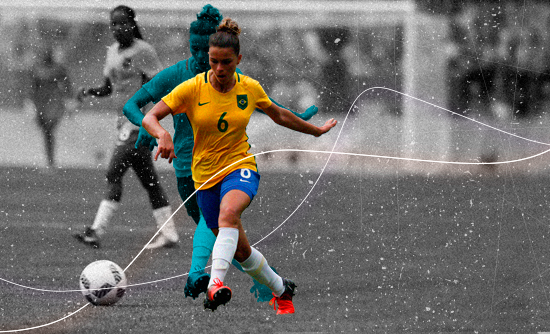Big Data Helps Teams in The Women’s Soccer World Cup
 Zoox Smart Data - 20 de June de 2019.
Zoox Smart Data - 20 de June de 2019.
Did big data help Liverpool win the 2019 Champions League? They defeated Tottenham and believed the reason was from an innovative strategy in world football. They believed in using big data to make better decisions.
For years, baseball and basketball used data analysis to improve team efficiency. However, the practice was overlooked in soccer. With the start of the Women’s World Cup, we will have the opportunity to see big data help again.
How Big Data Affects Performance Analysis
The amount of collected data from a soccer game is huge. After the data collection, it goes to a platform and is thoroughly analyzed by the technical team. Then, it extracts metrics including traveled distance, speed, pass completion, likelihood of injury, and recovery rate.
The Dutch women’s team already adopted the practice. In 2017, the first tests were done and the result was the Dutch’s first title in the competition.
“We are always looking for ways to improve our chances. This approach will provide data that will take us further than before. It will be very interesting and we are looking forward to the results,” says Sarina Wiegman, coach of the Orange team.
Data Drives Management
Data-driven management has been a big differential in hiring teams. Naby Keïta, Guinean midfielder, was in the Austrian championship after standing out in correct crossings. Now, he is one of the most valued players for Liverpool and Europe.
“We know that someone spent hours studying that content, but the coach does not fill people with statistics and analysis. He just tells us what to do”, says Liverpool midfielder Alex Oxlade-Chamberlain.
In soccer, a recent big data offering is “expected goals” (xG). The metric determines the likelihood of a player to score a goal in a situation. It calculates the analysis of their kicks and assigns an expected value to it. Next, there is a comparison of these values between the matches before making observations about the player.
This type of analysis facilitates the assembly of the teams. It also facilitates tactical schemes that extract the best from each athlete. This information is crucial for a €28.5 billion market.
Game Day: Big Data and The Fan Experience
“Game Day” is a term to describe the day of the sporting event. The experience can vary for many fans. Teams and venues strive to enhance the fan experience from the time before the game until after the game.
Big data has been a powerful ally for teams. Recently, Brazil’s main stadiums completed the installation of WiFi and 4.5G networks. The use of such networks can be an important source of data.
For each connected fan, the system requests information that helps the composition of a fan profile. With Wi-Fi applications (e.g. Zoox Smart Wi-Fi), targeted advertising campaigns can reach certain fans and direct them to stores or events within the stadium.
Moreover, the heat map of the connected fans helps soccer clubs to understand the traffic flow inside the stadiums. Where does each fan come from? Where do they meet? Also, where do rival interactions happen and can it become problematic? This information helps sales and security.
About The Women’s Soccer World Cup
The Women’s Soccer World Cup started on June 7 in France. It has 52 games and more than 1 million tickets sold in the first two weeks.
Whichever team uses big data may have the best chances of winning the title!






Comments